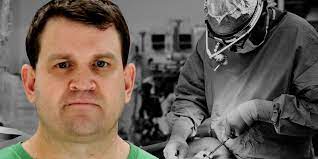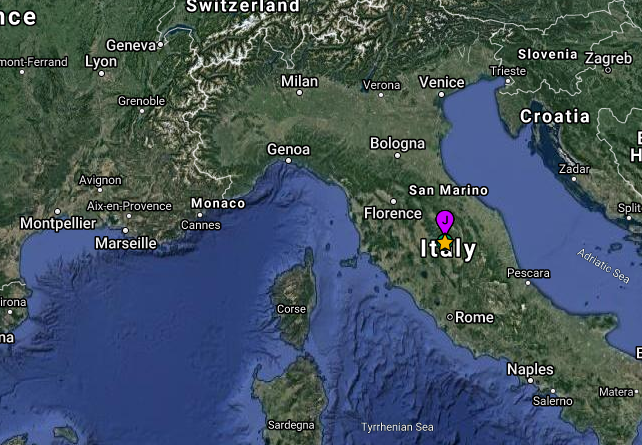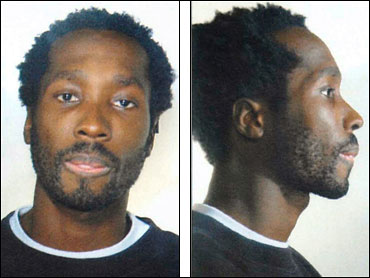 I turned 65 this week. Officially, I’m a Senior. I’m now eligible for geezer graft – my public pension and a free morning coffee at McDonalds plus 10 percent price cuts at prestigious places I patronize like Walmart, Home Depot, Habitat For Humanity’s ReStore, Salvation Army’s thrift shop, and many, many hole-in-the-wall used book stores. On delegated days, of course, and with certain conditions applying like having my Covid vaccine papers ready and my leak-free Depends securely on. Also, my If Found – Return To wristband in place and my GPS tracker beaconing away.
I turned 65 this week. Officially, I’m a Senior. I’m now eligible for geezer graft – my public pension and a free morning coffee at McDonalds plus 10 percent price cuts at prestigious places I patronize like Walmart, Home Depot, Habitat For Humanity’s ReStore, Salvation Army’s thrift shop, and many, many hole-in-the-wall used book stores. On delegated days, of course, and with certain conditions applying like having my Covid vaccine papers ready and my leak-free Depends securely on. Also, my If Found – Return To wristband in place and my GPS tracker beaconing away.
I never thought I’d live this long, given some of the high-risk behavior I’ve displayed during my 65 trips around the sun. 64 of those trips were pretty much fun. 1 was not. However, that bad trip gave me an entirely new respect for the value of this extremely precious and terribly fragile thing called life.
My 65 trips gave me insight into what’s important and what’s not. They also gave me plenty of time to think. Specific thinking. Random thinking. And nonsense thinking. In no particular order, and with no particular agenda, here are 65 thoughts from 65 years—many borrowed from folks much wiser than me. By the way, I also shared this post with friends over at the Kill Zone blog on Thursday although it’s tweaked a bit for today.
———
1. Whatever the mind can conceive and believe it can achieve by taking planned action with a positive mental attitude. This is the core of Napoleon Hill’s Think and Grow Rich personal growth and success philosophy which, in my experience, is pure truth. It’s the primal advice I pass on.
2. You become what you think about most of the time.
 3. Be careful with your thoughts, because your thoughts become your words. Be careful with your words, because your words become your actions. Be careful with your actions, because your actions become your habits. Be careful with your habits, because your habits become your character and your character becomes your destiny.
3. Be careful with your thoughts, because your thoughts become your words. Be careful with your words, because your words become your actions. Be careful with your actions, because your actions become your habits. Be careful with your habits, because your habits become your character and your character becomes your destiny.
4. Dream big. Dream often. The first step in achieving big dreams is by having them.
5. Don’t matter what came first—the chicken or the egg—as long as you stay alive and remain healthy enough to eat them.
6. I’ve been rich. I’ve been poor. Rich is better.
7. Always read the instructions. Twice. Then save them.
8. Don’t buy extended warranties, timeshares, or cheap tools.
9. Persistence is to character as carbon is to steel.
10. If you must read the news, read for fact and data, not for opinions.
11. Cocaine users say they indulge because it amplifies their personality. I say coke is a dangerous drug for assholes.
12. When the student is ready, the teacher will appear.
 13. If you chase a badger across a field and it goes down a hole, don’t follow and poke its backside with a pick handle. Seriously, don’t. I tried this. You’d be amazed at how fast badgers can turn around in a tight spot.
13. If you chase a badger across a field and it goes down a hole, don’t follow and poke its backside with a pick handle. Seriously, don’t. I tried this. You’d be amazed at how fast badgers can turn around in a tight spot.
14. People of accomplishment rarely sit back and let things happen to them. They go out and happen to things.
15. Do not steal the parking spot reserved for the guy who’s about to interview you for your dream job.
16. And don’t bother searching for your eyeglasses while wearing them.
17. Speaking of eyeglasses, when you do go searching for your lost glasses and finally find them, don’t put them back where you found them. Put them where you first looked for them.
18. Once you get it all down to one shopping cart, you’ve got it made.
19. The Golden Rule will never fail. It’s the foundation of all other virtues.
20. I don’t judge your age, race, gender, sexual orientation, language, religion, political beliefs, education, occupation, body shape, or any other quirk that makes you a human being. You are you. I am me. I’ll be nice to you even if you’re not nice to me and I’m fine with that.
21. Never get involved in an Asian land war.
 22. To make mistakes is human. To own your mistakes is divine. Nothing elevates a person higher than quickly admitting to, and taking personal responsibility for, the mistakes you make and then fixing them fairly. If you mess up, fess up. It’s astounding how powerful this ownership is.
22. To make mistakes is human. To own your mistakes is divine. Nothing elevates a person higher than quickly admitting to, and taking personal responsibility for, the mistakes you make and then fixing them fairly. If you mess up, fess up. It’s astounding how powerful this ownership is.
23. Optimize your generosity. No one on their deathbed ever regretted giving away too much.
24. I’ve never seen a hearse pulling a trailer loaded with a ski-boat, an ATV, or a full-dresser Harley.
25. A vacation + a disaster = an adventure.
26. Ancient Jewish wisdom says not to argue to win the argument. Argue to discover the truth.
27. The difference between successful people and really successful people is that really successful people say no to almost everything.
28. The best way to have good ideas is to have a lot of ideas and then discard the bad ideas.
29. Seek to be the wisest in the room, not the loudest, and never miss a good chance to shut up.
 30. Never take down a fence until you know why it was put up.
30. Never take down a fence until you know why it was put up.
31. If you have to convince someone to stay with you, they’ve already left.
32. You have to write the book that wants to be written. And if the book is too difficult for adults, then write it for children.
33. No tears in the writer, no tears in the reader. No surprise in the writer. No surprise in the reader.
34. Always apply the duck test.
35. The past is behind, learn from it. The future is ahead, prepare for it. The present is here, live it.
36. The two founding points of human existence are consciousness and entropy.
37. Everything in moderation, including moderation.
38. Read, read, read. Read everything—trash, classics, bad and good, and see how they do it. Just like a stonemason who works as an apprentice and studies the master. Read! You’ll absorb it. Then write. If it’s good, you’ll find out. If it’s not, throw it out the window and write something else.
 39. Carl Sagan said, “A book is made from a tree. It is an assemblage of flat, flexible parts (still called leaves) imprinted with dark pigmented squiggles. One glance at it and you’ll hear the voice of another person, perhaps a person who’s been dead for thousands of years. Across the millennia, the author is speaking, clearly and silently, inside your head, directly to you. Writing is perhaps the greatest of human inventions, binding together people, citizens of distant epochs, who never knew one another. Books break the shackles of time—proof that humans can work magic.”
39. Carl Sagan said, “A book is made from a tree. It is an assemblage of flat, flexible parts (still called leaves) imprinted with dark pigmented squiggles. One glance at it and you’ll hear the voice of another person, perhaps a person who’s been dead for thousands of years. Across the millennia, the author is speaking, clearly and silently, inside your head, directly to you. Writing is perhaps the greatest of human inventions, binding together people, citizens of distant epochs, who never knew one another. Books break the shackles of time—proof that humans can work magic.”
40. And Lady Gaga said, “When you make music or write or create, it’s really your job to have mind-blowing, irresponsible, condomless sex with whatever idea it is you’re screwing with at the time.”
41. There are old pilots and there are bold pilots but there are no old bold pilots.
42. You don’t stop flying when you get old. You get old when you stop flying.
43. A ride in a US Navy F-18 Hornet flight simulator is a mind-blowing and condomless, sexual experience. Been there. Done that. MUST do again.
44. A business rule: Pay every invoice within 48 hours. You’ll be amazed at how many people give your work top priority.
45. Ungulates like deer, moose, elk, and caribou have antlers for a reason.
 46. Bears have claws and teeth for a reason, too. Don’t poke the bear like I poked the badger.
46. Bears have claws and teeth for a reason, too. Don’t poke the bear like I poked the badger.
47. The cost of perfection is inaction, but boring progress produces exceptional results.
48. The less you need the approval of others, the easier it is to get what is right rather than what is easy.
49. “I don’t pay no attention to no kind of critics about nothing. If they knew as much as they claim about what they’re criticizing, then they ought to be doing that instead of standing on the sidelines using their mouth.” ~Muhammad Ali.
50. Multitasking is not only not thinking, it impairs your ability to think. Thinking means concentrating on one thing long enough to develop an idea about it. You do your best thinking by slowing down and concentrating.
51. Ninety percent of success can be boiled down to consistently doing the obvious thing for an uncommonly long time without convincing yourself that you’re smarter than you are.
52. That thing that made you weird as a kid could make you great as an adult—provided you don’t lose it.
53. If someone tries to convince you it’s not a pyramid scheme, it’s a pyramid scheme.
54. If you have any doubts about your ability to carry a load in one trip, do yourself a favor and make two trips.
 55. Anything real begins with the fiction of what it could be. Imagination is the most potent force in the universe, and a skill you can get better at. It’s the one skill in life that benefits from ignoring what everyone else knows.
55. Anything real begins with the fiction of what it could be. Imagination is the most potent force in the universe, and a skill you can get better at. It’s the one skill in life that benefits from ignoring what everyone else knows.
56. For every dollar you spend on something substantial, expect to pay another dollar in energizing, repairing, maintaining, disposing, and replacing by the end of its serviceable life.
57. Eliminating clutter makes room for your true treasures.
58. If you plant for days, plant flowers. If you plant for years, plant trees. If you plant for eternity, plant ideas.
59. Never start a fight. Especially one you can’t win. Like, don’t get in a pissing match with a skunk, because you’re going to end up taking an excruciating, eye and nose blast plus a humiliating, clothes-stripped, tomato juice remediation bath while the skunk reloads and carries on to hose the next idiot who’s stupid enough to cross it.
59. Subsection 1. Same applies to badgers.
60. A writer is someone for whom writing is more difficult than it is for other people.
61. People shouldn’t look for perfect leaders. They should look for authentic leaders with human-flawed competence and integrity, not consumed with presenting their title’s self-importance.
62. Near the end of his life, Steve Jobs said, “I learned that life is like a river. At first, you think that if you’re successful, you get to take many things from that river… products people have made or ideas people have come up with. But, eventually, in life you realize that it’s not what you take from the river, it’s what you get to put into that river.”
63. Everyone is entitled to their opinion, but not their facts.
64. Learning is not compulsory. Neither is survival.
65. When you die, you take nothing with you except your reputation.
Bonus Bit: When playing Monopoly, spend all you have to buy, barter, or trade for the strategic orange properties at the end of the second stretch just before Free Parking. Don’t bother with Utilities or Railroads. If you play the game right, and for long enough, you’ll find Park Place and Boardwalk are terrible returns on investment.
Another Bonus From 31Oct2021: I don’t care if the cat is black or white as long as it catches mice.
———
Dyingwords followers – What words of wisdom will you share? Don’t be shy about commenting!















